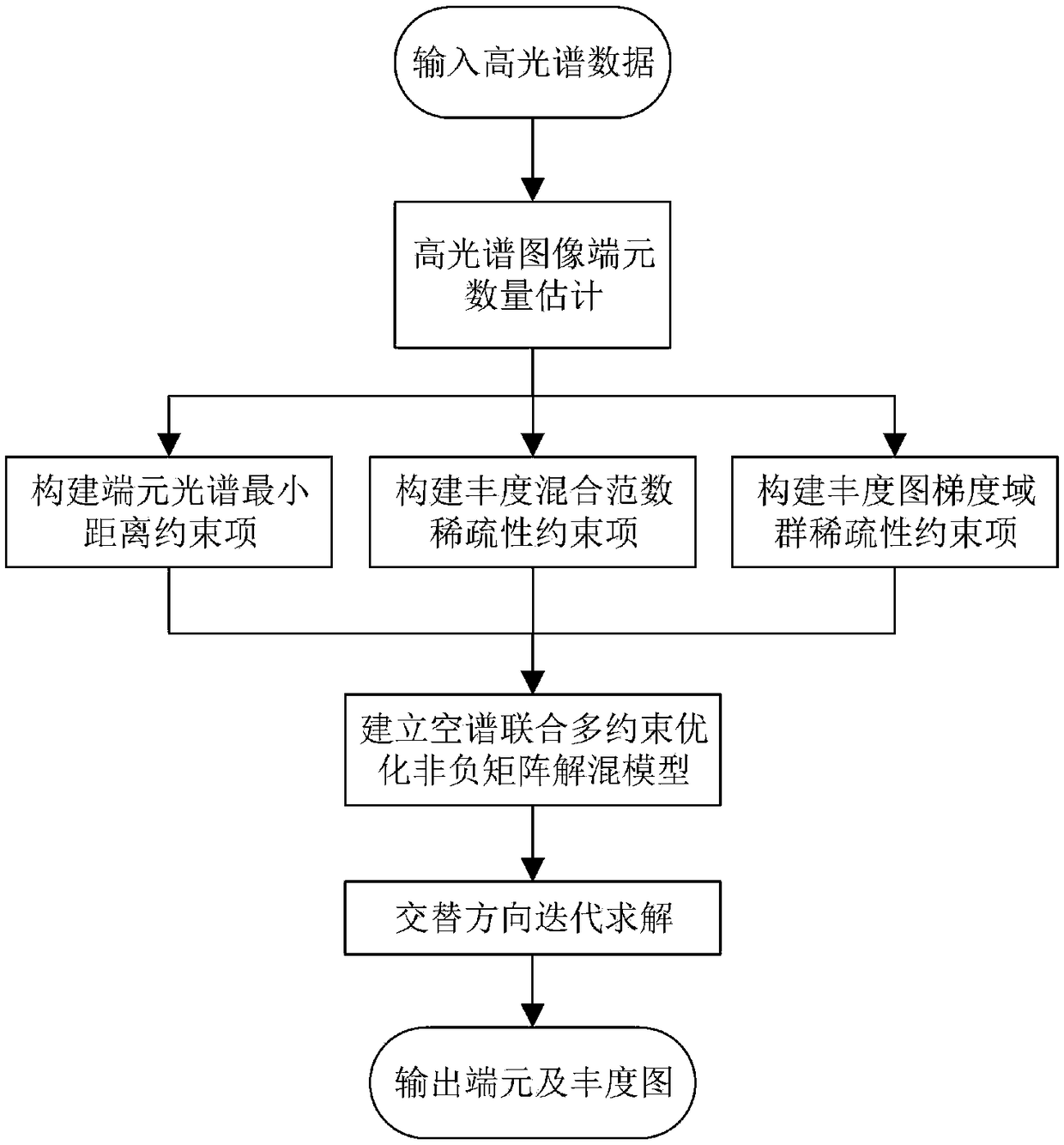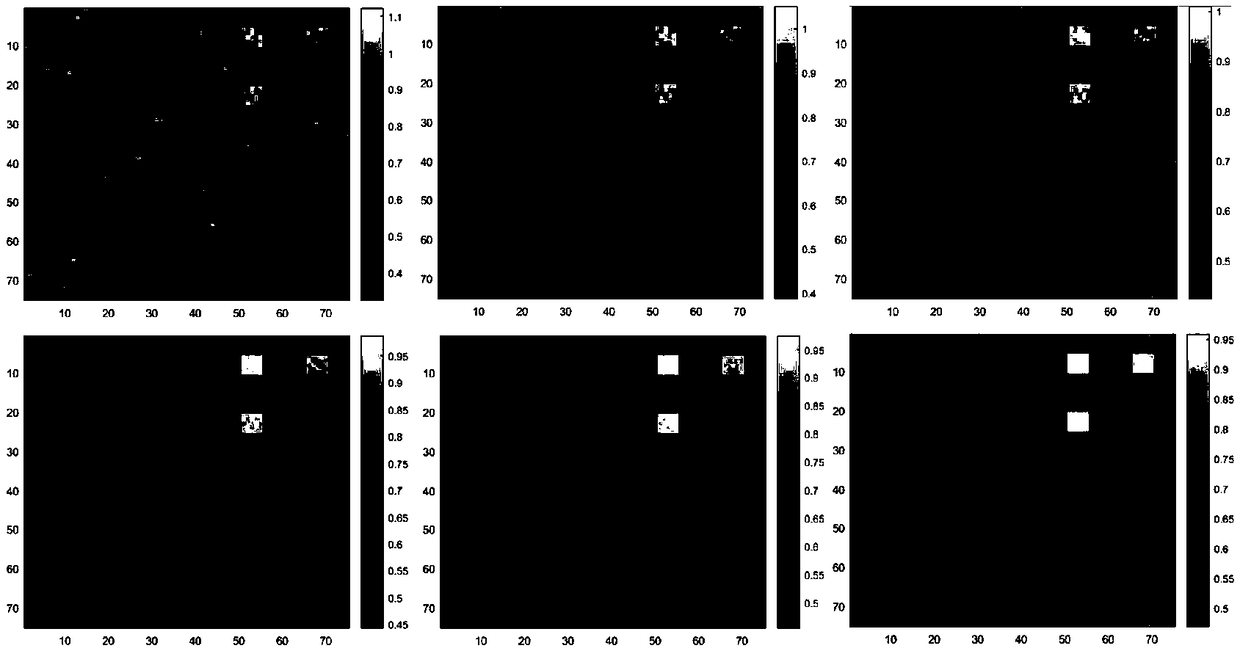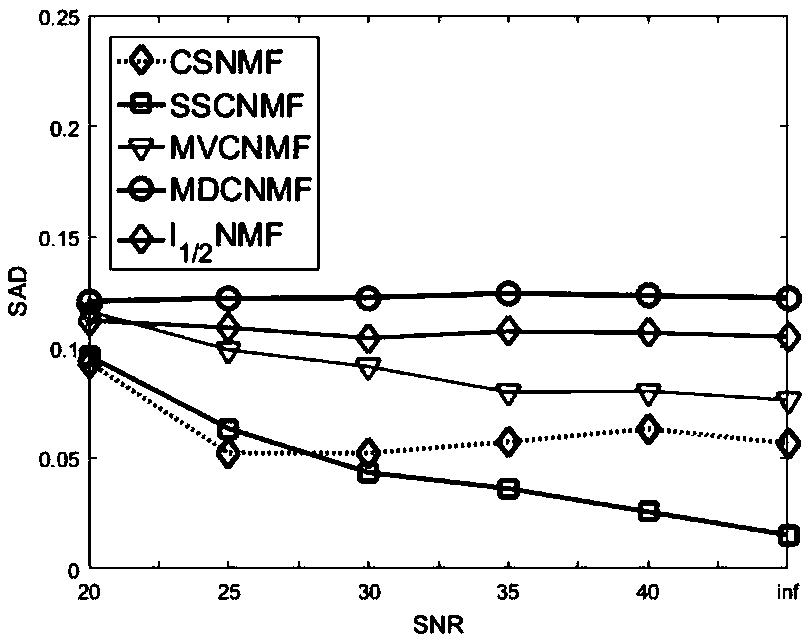Non-negative matrix unmixing method based on space-spectrum combined multi-constraint optimization
A non-negative matrix and multi-constraint technology, applied in the field of remote sensing hyperspectral data processing, can solve problems such as low unmixing accuracy, reduced algorithm performance, and no effective joint space-spectral information
- Summary
- Abstract
- Description
- Claims
- Application Information
AI Technical Summary
Problems solved by technology
Method used
Image
Examples
Embodiment
[0106] combine figure 1 , a space-spectrum joint multi-constraint optimization non-negative matrix unmixing method, the steps are as follows:
[0107] The first step is to estimate the number of hyperspectral endmembers
[0108] (1) Process raw hyperspectral data to obtain model input
[0109] Raw hyperspectral image data Y∈R L×W×H , where L represents the number of hyperspectral bands, W and H represent the width and height of the image space dimension, respectively. The original hyperspectral data Y is scanned pixel by pixel and sorted in the column direction of the spatial dimension row and column direction to form a spectral pixel matrix X=[x 1 ,x 2 ,...,x i ,...,x N ]∈R L×N , where N=W×H represents the number of hyperspectral pixels, x i ∈ R L , represents the i-th spectral pixel, 1≤i≤N.
[0110] (2) Estimation of the number of hyperspectral endmembers
[0111] Using the hyperspectral signal subspace identification algorithm based on the minimum error, the numb...
PUM
 Login to View More
Login to View More Abstract
Description
Claims
Application Information
 Login to View More
Login to View More - R&D
- Intellectual Property
- Life Sciences
- Materials
- Tech Scout
- Unparalleled Data Quality
- Higher Quality Content
- 60% Fewer Hallucinations
Browse by: Latest US Patents, China's latest patents, Technical Efficacy Thesaurus, Application Domain, Technology Topic, Popular Technical Reports.
© 2025 PatSnap. All rights reserved.Legal|Privacy policy|Modern Slavery Act Transparency Statement|Sitemap|About US| Contact US: help@patsnap.com



